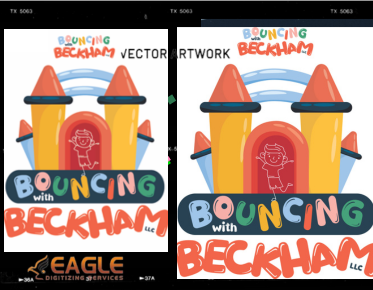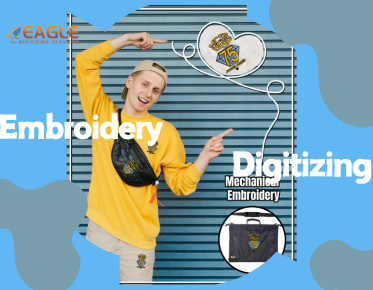Unlock Creativity: How to Create New Shapes from Vectors
Creatingnew shapes from vectors is a fantastic way to expand your design toolkit and push the
boundaries of your creativity. In this article, we’ll guide you through
essential techniques for manipulating and combining vector shapes, allowing you
to craft original designs that stand out. Whether you're a graphic designer,
illustrator, or hobbyist, mastering these methods will empower you to bring
your artistic visions to life. Get ready to explore the endless possibilities
that vector manipulation offers and transform your design projects with fresh,
innovative shapes.
The Benefits of Creating New Shapes: Customization and Uniqueness
Creating new
shapes isn’t just about aesthetics; it’s about carving out a distinct identity.
Customization infuses individuality into designs, allowing them to resonate
with specific audiences or branding needs. In an age where uniqueness is
paramount, designers are continually challenged to innovate. Crafting new
shapes enables artists to explore their creativity and express ideas in
visually captivating ways. Furthermore, unique designs can captivate attention,
making them memorable and effective in conveying messages.
Tools You’ll Need for Shape Creation
Essential
Software for Editing Vector Images: A Beginner’s Guide
The journey of
shape creation begins with the right tools. Software like Adobe Illustrator,
CorelDRAW, and Affinity Designer are cornerstones in the vector editing realm.
For newcomers, exploring user-friendly programs like Inkscape can provide an
accessible introduction without the steep learning curve. Each program offers a
suite of features tailored for creating and manipulating vector graphics. The
choice of software largely depends on personal preference, budget, and desired
functionalities.
Free
vs. Paid Tools: Which is Right for You?
When deciding
between free and paid tools, it’s essential to consider the scope of your
projects. Free tools offer fantastic features for beginners and hobbyists,
while paid software often provides advanced capabilities and support. Budget
constraints may steer you toward free options, but investing in premium
software can yield dividends in productivity and creativity. Assess your
needs—whether you're crafting simple graphics or embarking on complex
designs—and choose the tool that aligns with your goals.
Recommended
Plugins and Extensions for Enhanced Functionality
To elevate your
design experience, consider exploring plugins and extensions. Tools like Astute
Graphics for Illustrator provide powerful functionalities that streamline
workflows. These enhancements can significantly amplify the capabilities of
your editing software, making complex tasks simpler and faster. Finding the
right extensions can turn a robust program into an indispensable asset,
allowing you to focus more on creativity and less on cumbersome processes.
Getting Started: Preparing Your Vector Image
Choosing
the Right Vector File Format: SVG, AI, and More
Selecting the
appropriate vector file format is crucial for
effective editing. SVG (Scalable Vector Graphics) is widely recognized for its
versatility and web compatibility, while AI (Adobe Illustrator) files retain
all editing capabilities in Illustrator. Other formats, such as EPS
(Encapsulated PostScript), also play a role, especially in professional
printing contexts. Understanding the nuances of each format ensures that your
designs maintain integrity and editability throughout the creative process.
How
to Import Vector Images into Your Editing Software
Once you have
your vector file ready, importing it into your software is the next step. Most
programs support drag-and-drop functionality, simplifying the process.
Alternatively, use the ‘File’ menu to locate and import your images. Properly
importing files ensures that you can access all the elements without losing
quality or editability, setting the stage for successful shape creation.
Cleaning
Up Your Image: Removing Unwanted Elements
Before diving into
transformation, it’s vital to clean up your vector image. This involves
eliminating unnecessary elements that may clutter your design or complicate
editing. Use the selection tools to identify and delete superfluous paths or
objects, ensuring a streamlined canvas for your creative endeavors. A clean
image is akin to a blank slate, ready for artistic exploration.
Techniques for Creating New Shapes
The
Power of Path Editing: How to Modify Existing Shapes
Path editing is a
fundamental technique that allows designers to reshape existing graphics. By
manipulating anchor points and handles, you can stretch, compress, and reshape
any vector element. This powerful tool enables nuanced changes that can
dramatically alter the look and feel of a design. Whether you’re refining a
curve or adjusting a corner, mastering path editing is essential for any vector
artist.
Using
the Pen Tool: Crafting Unique Forms from Scratch
The pen tool is
the quintessential companion for creating bespoke shapes. With its precision
and flexibility, it empowers you to draw intricate designs that reflect your
vision. While it may come with a learning curve, mastering the pen tool unlocks
limitless creative potential. Each click of the mouse adds to your canvas,
allowing you to forge unique forms that resonate with your artistic flair.
Clipping
Masks: Creating New Shapes from Existing Images
Clipping masks
are a fantastic way to create new shapes from existing images without altering
the original files. By using a mask to define a visible area, designers can
showcase only the parts of an image that align with their vision. This
technique is especially useful for intricate designs or layered graphics,
offering a clean and professional finish. Clipping masks can be a game-changer
for adding depth and intrigue to your artwork.
Transforming Shapes with Basic Tools
Scaling
and Resizing: Maintaining Proportions
Scaling and
resizing are crucial techniques in vector design, allowing you to adjust
dimensions while maintaining proportions. This ensures that your shapes retain
their integrity, avoiding distortion that can detract from the design’s
quality. Use the shift key while resizing to keep proportions intact, resulting
in a polished and professional look. The ability to scale effectively is
invaluable, especially when adapting designs for various applications.
Rotating
and Flipping: Achieving Symmetry and Balance
Rotating and
flipping shapes can dramatically alter their visual impact. These techniques
are instrumental in achieving symmetry and balance, essential principles of
design. Whether aligning elements for visual harmony or creating dynamic
layouts, mastering these tools can enhance your overall composition. A
well-placed rotation can transform an ordinary shape into a captivating focal
point.
Combining
Shapes: Merging Multiple Vectors for New Designs
Combining shapes
is a cornerstone of vector design, enabling the
creation of intricate designs from simple elements. Use the Pathfinder tool in
your software to merge, subtract, or intersect shapes, resulting in new and
exciting forms. This technique fosters creativity, allowing you to experiment
and discover innovative designs that stand out in a sea of graphics.
Advanced Techniques for Shape Creation
Boolean
Operations: Cutting, Combining, and Overlapping Shapes
Boolean
operations elevate shape creation to new heights, allowing for sophisticated
manipulations. These operations enable you to cut, combine, and overlap shapes
seamlessly, opening a world of possibilities. For instance, creating complex
designs becomes effortless when using union, subtraction, intersection, and
exclusion tools. Mastering Boolean operations can transform simple graphics
into captivating designs that showcase your creativity.
The
Magic of Gradients: Adding Depth to Your New Shapes
Gradients bring
shapes to life, adding depth and dimension that flat colors simply cannot
achieve. By blending multiple colors, you create a sense of movement and
texture, drawing the viewer’s eye. Experiment with linear, radial, and angular
gradients to discover which best suits your design. The thoughtful application
of gradients can elevate your shapes from basic to extraordinary, enhancing
visual interest.
Creating
Patterns: Designing Repetitive Shapes for Visual Impact
Patterns are a
powerful way to enrich your designs and create visually striking backgrounds or
elements. By designing repetitive shapes and arranging them methodically, you
can develop captivating patterns that enhance your artwork. Patterns not only
add flair but also unify your designs, creating a cohesive aesthetic. This
technique is invaluable for branding materials, packaging, and digital artwork.
Exploring Creative Options
Customizing
Color Palettes: Enhancing Your Shapes
Color is a
pivotal element of design, and customizing palettes can significantly enhance
your shapes. Experiment with color theory to create harmonious combinations that
resonate with your audience. Whether you lean toward bold contrasts or subtle
tones, a well-curated color palette breathes life into your designs, capturing
attention and evoking emotions.
Adding
Textures and Effects: Bringing Shapes to Life
Textures and
effects can transform flat shapes into dynamic visuals. By incorporating
textures, gradients, and shadows, you can add a tactile quality that engages
viewers. Subtle effects like drop shadows or glows can create depth and
dimension, making your shapes pop off the page. This artistic approach not only
enhances aesthetics but also elevates the overall quality of your design.
Incorporating
Illustrations: Merging Images for Unique Designs
Combining vector
shapes with illustrations is a fantastic way to create unique designs. Merging
these elements allows you to craft compelling narratives within your artwork.
Whether layering shapes beneath an illustration or creating a blended design,
this technique fosters creativity and originality, resulting in captivating
visuals that tell a story.
Using Your New Shapes: Applications and Ideas
How
to Incorporate New Shapes into Graphic Design Projects
Incorporating new
shapes into graphic design projects enhances creativity and visual appeal. From
branding materials to marketing collateral, these unique shapes can breathe
life into your work. Experiment with placement, layering, and color to maximize
impact, ensuring your designs resonate with their intended audience.
Using
Shapes for Branding: Logos, Business Cards, and More
Shapes play a
fundamental role in branding, serving as the visual language of a business.
Crafting custom shapes for logos or business cards can create a memorable
identity that stands out in a competitive marketplace. Consistency in using
shapes across various brand materials fosters recognition and trust among
consumers, reinforcing brand identity.
Creative
Applications: Posters, Social Media, and Digital Art
The versatility
of new shapes lends itself to various creative applications. Use them in
posters to attract attention or on social media to create engaging content. In
digital art, innovative shapes can tell compelling stories or evoke emotions,
enriching the viewer's experience. The possibilities are endless when it comes
to applying your creativity.
Troubleshooting Common Issues
Common
Pitfalls in Vector Editing: How to Avoid Them
Vector editing
can come with its challenges, from misaligned shapes to improper formatting.
Avoid common pitfalls by keeping your workspace organized and regularly saving
your progress. Familiarize yourself with your software’s tools and
functionalities to navigate problems efficiently. Understanding potential
issues can help streamline your workflow and enhance productivity.
Fixing
Shape Overlaps and Misalignments
Shape overlaps
and misalignments can detract from the overall quality of your design. Utilize
alignment tools within your software to ensure shapes are properly positioned.
When overlaps occur, use the pathfinder or boolean operations to resolve
issues, maintaining a clean and cohesive design. Regular checks during the
editing process can prevent these common frustrations.
Handling
File Corruption and Compatibility Issues
File corruption
can be a designer’s nightmare, leading to lost work and wasted time. Always
save backups of your files in different formats to mitigate this risk.
Compatibility issues can arise when sharing files across different software;
exporting in universally accepted formats, such as SVG or PDF, can help
alleviate these problems. Staying proactive about file management will save you
headaches down the line.
Vector design offers endless potential for creativity and expression. The ability to transform, customize, and create shapes empowersdesigners to communicate their ideas visually. By embracing the myriad of tools and techniques at your disposal, you can unlock a world of creativity that elevates your designs and captivates your audience. Dive into the world of vector images and unleash your imagination—your creative journey has just begun!



